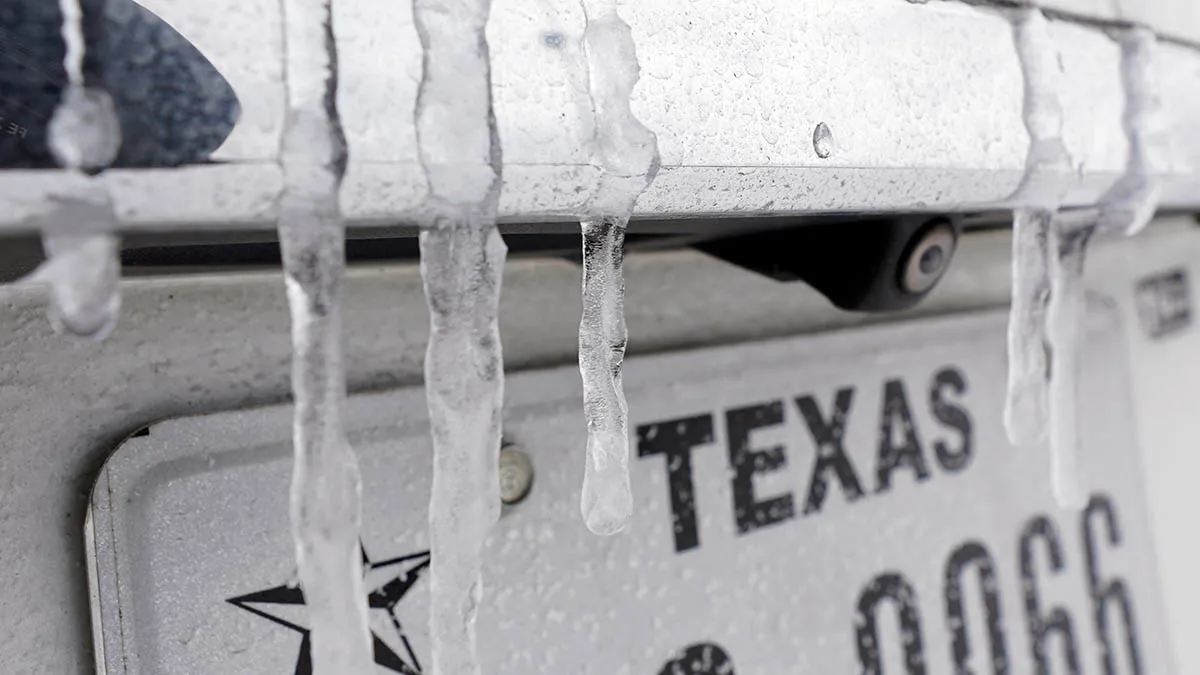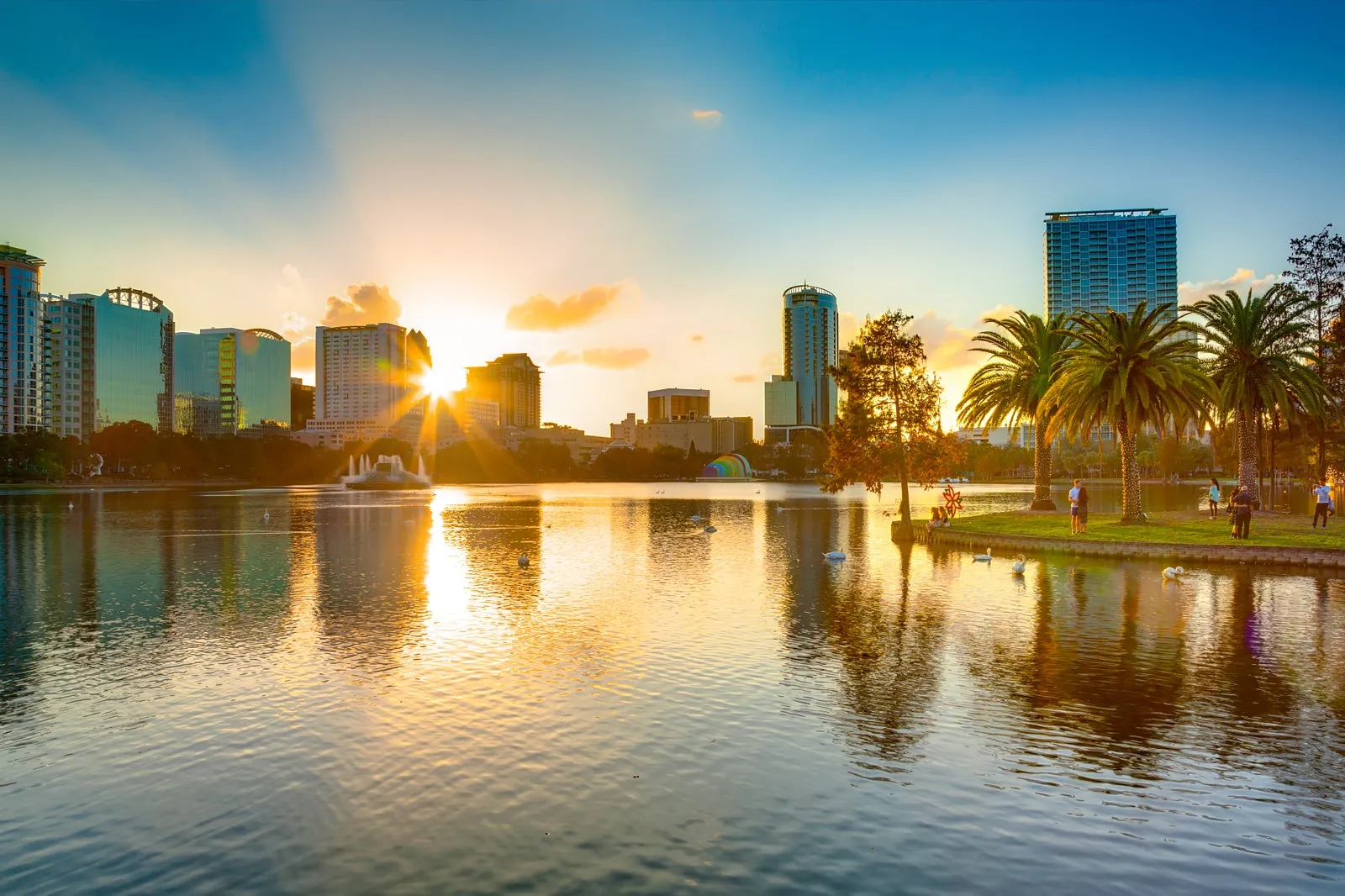Home>Weather and Climate>The Coldest Month In Orlando: Weather And Climate Information


Weather and Climate
The Coldest Month In Orlando: Weather And Climate Information
Published: March 6, 2024
Discover the weather and climate patterns during the coldest month in Orlando. Plan your trip with essential climate information and tips.
(Many of the links in this article redirect to a specific reviewed product. Your purchase of these products through affiliate links helps to generate commission for Temperatures.com, at no extra cost. Learn more)
Table of Contents
Understanding Orlando's Climate
Orlando, Florida, is renowned for its sunshine and warm weather, attracting millions of visitors each year. However, the city's climate experiences distinct seasonal variations, with winter being a notable departure from the typical tropical conditions. Understanding Orlando's climate is essential for residents and visitors alike, especially when preparing for the coldest month.
Orlando falls within the humid subtropical climate zone, characterized by hot and humid summers and mild winters. The city's proximity to the Gulf of Mexico and the Atlantic Ocean significantly influences its climate patterns. During the winter months, Orlando experiences cooler temperatures and lower humidity levels, creating a refreshing change from the sweltering summer heat.
The city's unique location also exposes it to occasional cold fronts, which can result in dramatic temperature fluctuations. These cold fronts bring cooler air from the north, causing a temporary drop in temperatures. While these cold snaps are relatively short-lived, they contribute to Orlando's reputation for experiencing occasional chilly weather, particularly during the coldest month of the year.
Understanding Orlando's climate involves recognizing the interplay of various factors that contribute to its overall weather patterns. From the influence of nearby bodies of water to the occasional intrusion of cold fronts, Orlando's climate is a dynamic blend of subtropical elements. This understanding is crucial for residents and visitors to effectively prepare for the coldest month and make the most of their time in this vibrant city.
By delving into the intricacies of Orlando's climate, individuals can gain valuable insights into the seasonal changes and fluctuations that shape the city's weather. This knowledge forms the foundation for making informed decisions regarding activities, attire, and overall preparedness for the coldest month, ensuring a comfortable and enjoyable experience amidst Orlando's unique climate.
Average Temperatures in January
In January, Orlando experiences a noticeable shift in its typical climate, with average temperatures reflecting the onset of winter. The city's daily temperatures during this month typically range from around 50°F (10°C) in the early morning to approximately 70°F (21°C) in the afternoon. However, it's important to note that these figures represent averages, and actual temperatures can fluctuate based on various factors.
The relatively mild daytime temperatures in January make it conducive for outdoor activities, such as exploring theme parks, strolling through gardens, or enjoying al fresco dining. However, as the sun sets, the mercury tends to drop, and evenings can become notably cooler. It's not uncommon for nighttime temperatures to dip into the 40s°F (4-9°C) range, requiring individuals to dress accordingly for evening outings or outdoor events.
The transition from daytime warmth to evening chill necessitates versatile attire that can accommodate fluctuating temperatures. Layering clothing is a practical approach, allowing individuals to adjust their attire as the day progresses. This can include wearing a light sweater or jacket that can be easily removed during the warmer daytime hours and then donned again as the evening cool sets in.
Understanding the average temperatures in January is crucial for planning outdoor excursions and selecting appropriate attire. By being mindful of the expected temperature ranges, individuals can make informed decisions about their daily activities and ensure they are adequately prepared for the weather conditions they may encounter.
Moreover, these average temperatures provide valuable insights for visitors planning their trips to Orlando in January. Whether it's exploring outdoor attractions, attending events, or simply enjoying the city's offerings, having a clear understanding of the expected temperatures enables visitors to pack and plan accordingly, ensuring a comfortable and enjoyable experience during the coldest month in Orlando.
In essence, the average temperatures in January serve as a guide for residents and visitors, offering valuable information that forms the basis for making informed decisions about daily activities, attire, and overall preparedness for the unique climate that characterizes Orlando during its coldest month.
Historical Weather Data
Historical weather data provides valuable insights into the climatic trends and temperature variations that have characterized Orlando's coldest month over the years. By examining past weather patterns, it is possible to discern recurring trends and gain a deeper understanding of the typical conditions experienced during this period.
In Orlando, historical weather data for the coldest month reveals a consistent pattern of mild daytime temperatures and cooler evenings. Over the years, January has exhibited a reliable range of average temperatures, with daytime highs typically hovering around 70°F (21°C) and nighttime lows settling in the 40s°F (4-9°C) range. This recurring pattern underscores the predictable nature of Orlando's winter climate, allowing residents and visitors to anticipate and prepare for the expected temperature fluctuations.
Furthermore, historical weather data illuminates the occasional influence of cold fronts on Orlando's climate during the coldest month. These data points highlight instances where temporary dips in temperature have occurred, often attributed to the passage of cold fronts from the north. While these cold snaps are transient, they contribute to the overall climatic narrative of Orlando's winter, adding an element of variability to the city's seasonal weather.
By delving into historical weather data, individuals can gain a comprehensive perspective on the climatic nuances that define Orlando's coldest month. This historical context serves as a valuable reference point for understanding the typical weather patterns, enabling informed decision-making when it comes to planning outdoor activities, selecting appropriate attire, and making the most of the city's offerings during this period.
Moreover, historical weather data empowers residents and visitors to prepare for the coldest month by drawing upon past trends and experiences. Armed with knowledge gleaned from historical weather patterns, individuals can approach the winter season in Orlando with confidence, knowing what to expect in terms of temperatures and weather conditions.
In essence, historical weather data offers a window into Orlando's climatic past, providing a roadmap of temperature trends and atmospheric dynamics that have shaped the city's coldest month. This historical perspective equips individuals with the insights needed to navigate the winter season in Orlando, ensuring they are well-prepared to embrace the unique climate that defines this vibrant city during its coolest period.
Factors Affecting Orlando's Winter Climate
Orlando's winter climate is influenced by a confluence of factors that collectively shape the city's seasonal weather patterns. Understanding these factors is essential for gaining insight into the dynamics of Orlando's coldest month and the conditions that prevail during this period.
-
Geographical Location: Orlando's proximity to bodies of water, including the Gulf of Mexico and the Atlantic Ocean, plays a pivotal role in shaping its winter climate. The moderating influence of these water bodies helps regulate temperatures, preventing extreme cold spells while contributing to the overall subtropical character of the region.
-
Latitude and Solar Incidence: Orlando's position in the subtropics results in relatively shorter days and longer nights during the winter months. This reduced solar incidence leads to milder daytime temperatures and cooler evenings, defining the distinct diurnal temperature variations experienced in the city during winter.
-
Cold Fronts: Orlando's winter climate is occasionally impacted by the intrusion of cold fronts from the north. These frontal systems bring cooler air masses into the region, resulting in temporary drops in temperatures. While these cold snaps are transient, they contribute to the variability of Orlando's winter weather, adding an element of unpredictability to the seasonal climate.
-
Urban Heat Island Effect: The urbanization of Orlando has led to the development of urban heat islands, where the concentration of buildings and infrastructure can elevate local temperatures. While this effect is more pronounced during the summer, it can still influence the city's winter climate by contributing to slightly higher nighttime temperatures in urban areas.
-
Vegetation and Land Use: The presence of green spaces and vegetation within and around Orlando can influence local microclimates. These natural elements contribute to temperature moderation and can mitigate the impact of urban heat islands, fostering pockets of slightly cooler temperatures in certain areas.
-
Weather Systems and Atmospheric Dynamics: The interplay of atmospheric systems, including high-pressure areas and prevailing wind patterns, influences Orlando's winter climate. These dynamic forces contribute to the overall circulation of air masses, affecting temperature gradients and weather conditions experienced in the region.
Understanding these factors provides a comprehensive view of the multifaceted influences that shape Orlando's winter climate. By recognizing the interplay of geographical, meteorological, and environmental elements, individuals can gain a deeper appreciation for the complexities of the city's coldest month. This knowledge forms the foundation for informed decision-making, enabling residents and visitors to navigate Orlando's winter climate with confidence and preparedness.
Tips for Dressing and Preparing for the Coldest Month
As Orlando experiences its coldest month, it's essential to be well-prepared to stay comfortable and make the most of the city's offerings during this period. Here are some valuable tips for dressing and preparing for the cooler temperatures:
-
Layering is Key: Given the diurnal temperature variations, layering clothing is a practical approach to staying comfortable throughout the day. Start with a light, moisture-wicking base layer to regulate body temperature, add a insulating mid-layer, and top it off with a windproof and water-resistant outer layer to shield against any unexpected chill or light rain.
-
Comfortable Footwear: Opt for comfortable and supportive footwear that provides adequate insulation. This is particularly important for outdoor activities or extended periods of walking, ensuring that your feet stay warm and protected.
-
Accessories Matter: Don't overlook the importance of accessories. A cozy scarf, a stylish hat, and a pair of gloves can make a significant difference in staying warm, especially during the cooler evenings. Additionally, sunglasses can be beneficial during the day to shield your eyes from the bright winter sun.
-
Indoor-Outdoor Transition: As you plan your activities, consider the transition from outdoor to indoor environments. While it may be cooler outside, indoor spaces are often comfortably heated. Opt for clothing that allows for easy adjustment, such as a sweater or shawl that can be easily removed when transitioning indoors.
-
Stay Informed: Keep an eye on weather forecasts and be prepared for any sudden changes. While Orlando's winter climate is generally mild, occasional cold fronts can bring temporary drops in temperature. Staying informed allows you to adapt your attire and plans accordingly.
-
Hydration and Skincare: Despite the cooler temperatures, staying hydrated and protecting your skin are still important. Carry a water bottle and use moisturizer to combat the effects of drier air, ensuring that you remain comfortable and healthy throughout your time in Orlando.
By incorporating these tips into your preparations, you can confidently navigate Orlando's coldest month, embracing the unique climate while staying comfortable and ready to enjoy all that the city has to offer during this distinctive time of year.















